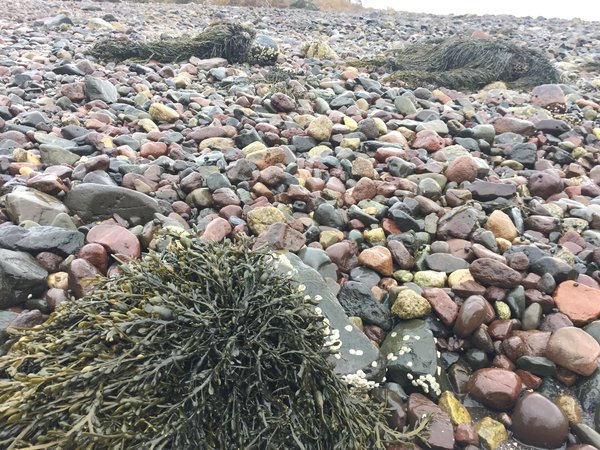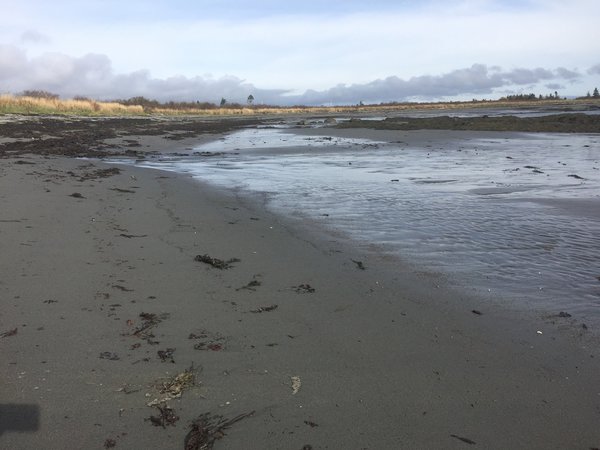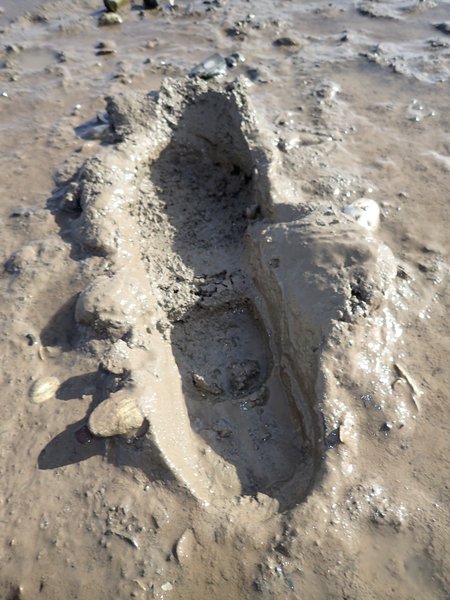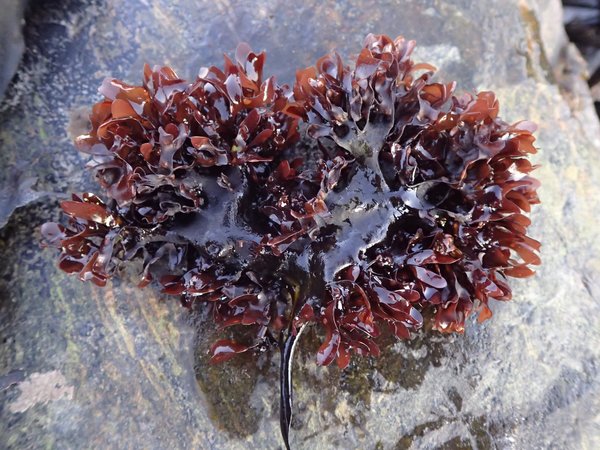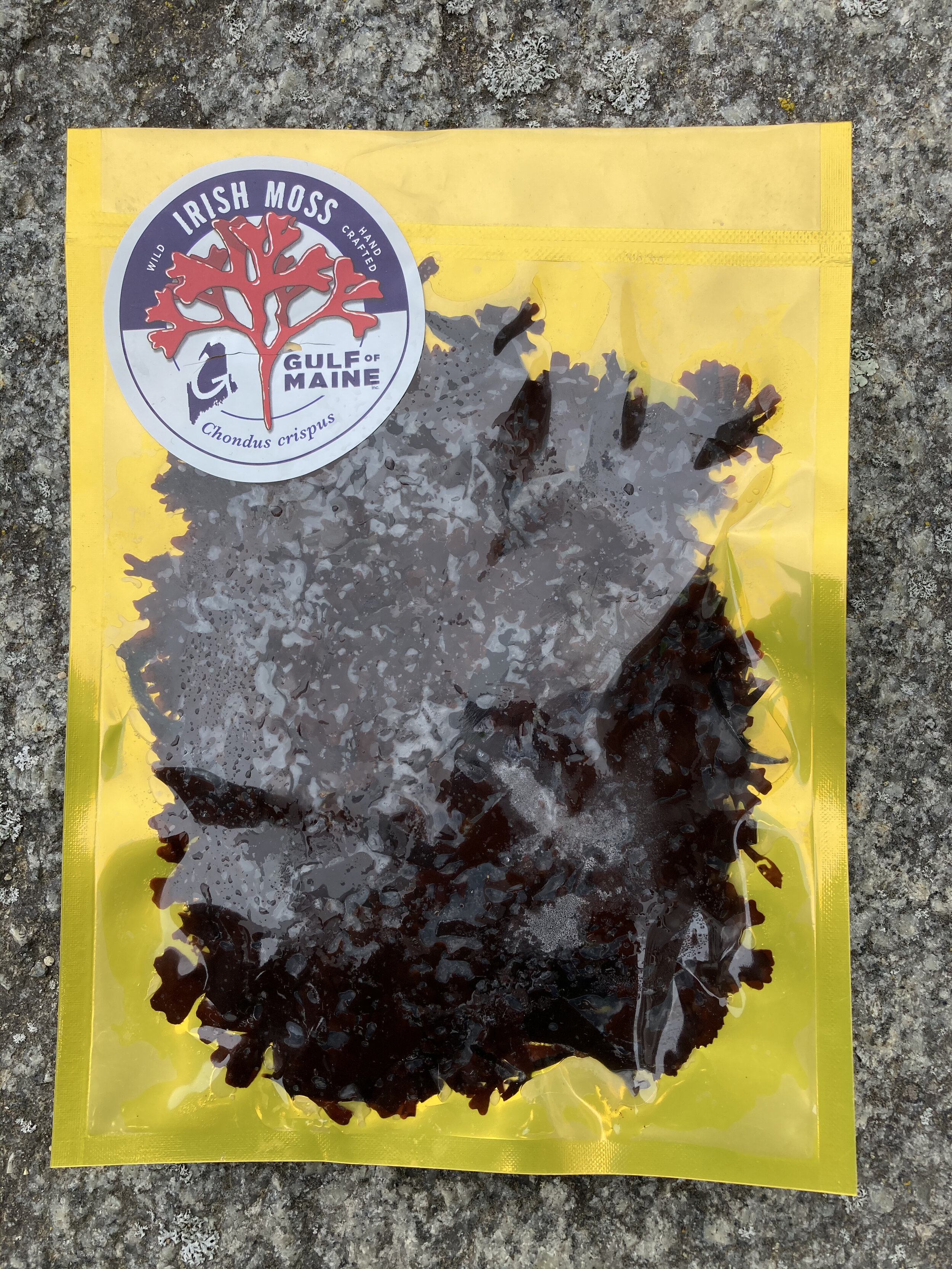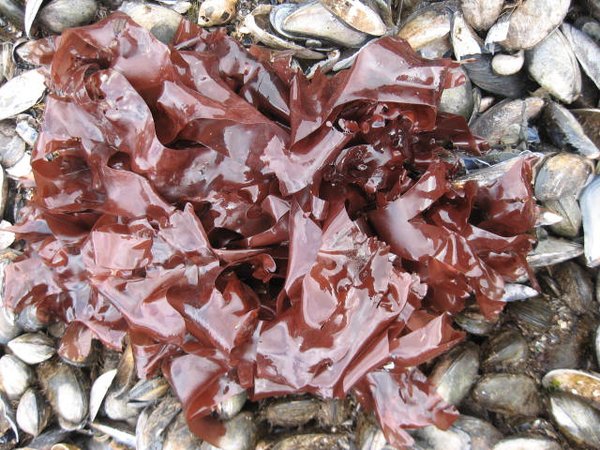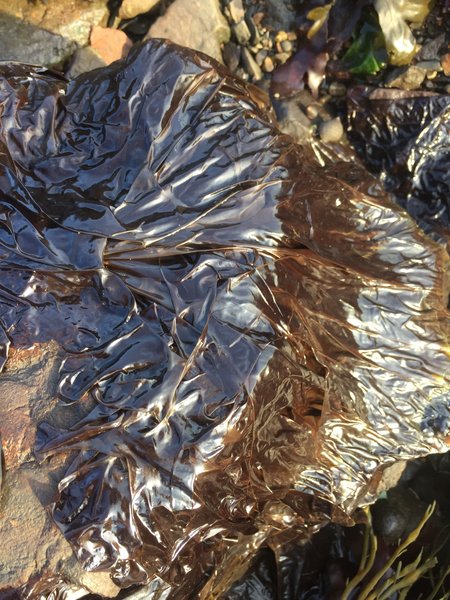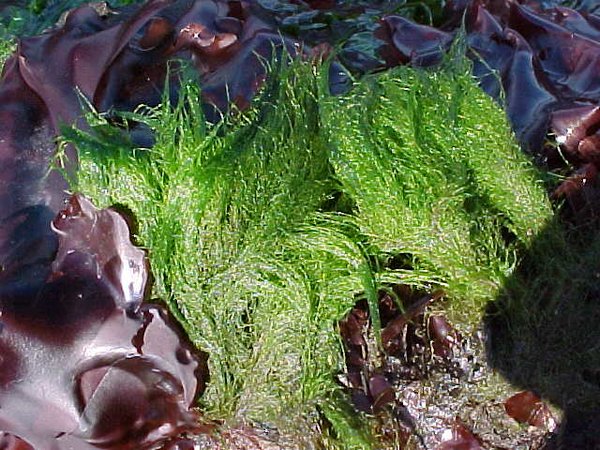Choosing an Aquarium Substrate for your Tank
As a supplier of Atlantic marine specimens, we often get asked by customers how to go about starting up a new cold water aquarium.
As a supplier of Atlantic marine specimens, we often get asked by customers how to go about starting up a new cold water aquarium. Like any building project, work begins at the bottom for most folks. Think tank, substrate, water, and organisms.
Luckily over the years we have helped many high schools, universities, labs, and small aquariums get tanks up and running and so we have helped establish and troubleshoot hundreds of tanks from the tiniest day-care center touch-tank to large commercial aquariums across the country. This is not rocket-science for sure.
Choosing a substrate
Customers often ask us how to choose a substrate for their new cold water aquarium. For me, it just comes down to personal preference mixed in with some knowledge of the kinds of organisms one hopes to populate the tank with once running.





At GOM, we offer several products to put down on the bottom of a tank and customers often will order a mix of materials. Our "Cobbly Seabed" is the most popular. With a mix of small and larger beach-washed stones, it offers a mixed habitat that works well for crustaceans, worms, fish, and some molluscs. Fractured shale with its dark color makes a nice dark contrast to bring out the color of anemones, sponges, and tunicates but since it settles onto the bottom so densely it does not offer as many interstitial nooks and crannies as the cobble. The color of the shale is often mixed in with tiny bits of colorful white and blue clam and mussel shells that also provide a nice bit of color.
accounting for burrowing organisms
For customers who are wanting to have burrowing type animals such as annelid worms, clams, sea cucumbers, and some anemones like the northern cerianthids - a salt/sand mud is ideal. It takes a bit longer for the sediment to settle and the tank water to clear, but then it's ideal for these type organisms. It's a joy to see the sea life happily burrowed into their new homes with siphons out and tentacles waving back and forth in the current. Sometimes a fine sand also will work well for burrowing specimens. We have had clients split their tank 50:50 with cobble and sand providing a nice area for a bed of sand dollars as well as other organisms.
Collect it yourself
For those wanting to collect their own tank substrate DIY style, a trip to any local beach with a strong bucket will yield a variety of options. It is best to bring smaller pails as this stuff is HEAVY. Take a walk around the beach area first to scout out options for substrates before you start gathering up what you think you'd like to take home. Though it does seem like you will need to scoop up lots of material this is not always the case. We like to put a good solid 2-3" of material in the bottom of our aquaria, but even in a 50-gallon setup - this is not really much more than a solid 5-gallon pail. 3 smaller pails each filled a third will take care of your needs.
Preparing your DIY substrate
Back at home with your beach sand or rocks, you will want to rinse out any organic debris that is mixed in with the material. This is easy to do with a garden hose. Place small amounts into a small dishwashing tub or pail, put the garden hose into the bottom of the container and turn on the water. As the container fills, mix it around with your free hand and you will see bits of grass, bark, leaves, shells, mud, and other fine particles come up into suspension. If mixed continuously, this crud will flow up and out of the pail, leaving the good rocks and sand below. Continue until you feel that your substrate is sufficiently clean and then repeat with the next lot(s) until finished. Soon you will have a nice supply of cleaned beach bottom to place in your tank as needed!
Get creative
Filling your aquarium with a substrate is totally up to your own artistic style. Mix in large and smaller stones, sand, cobble, silt and create the look that you want. Once you are satisfied it's now time to fill with seawater!
Thanks for reading,
Tidepool Tim
How to: Dig Spaghetti Worms
Spaghetti worms (Amphitrite spp.) live in super slimy tube burrows.
Spaghetti Worm
U-shaped burrow and castings. The hole ('volcano') is where the mouth of the worm is. The castings pile is the other end of the worm! The middle of the worm is deepest underground, at the center of the U's curve.
Spaghetti worms (Amphitrite spp.) live in super slimy tube burrows. They have a U-shaped burrow with the mouth at one end and their anus at the other end. The appearance of the front end of the worm gives it its name. Looking at the head you will see a bunch of red and tan colored tentacles stretching out of its burrow. The reddish tentacles are used for respiration. The whitish or tan tentacles are used for feeding.
The worm lives in a burrow for protection. Only the feeding tentacles come up above the bottom. They stretch out in a radius around the burrow and they pick up food particles, plankton, detritus - this is all reeled back into the mouth as a food source. Imagine a worm that is named for the red (tomato sauce) and the tan (pasta) tentacles.
Locating the worm
We find these worms on the mudflat by looking for their piles of poop (castings) that lie in a pile at the end of the U-shaped tube burrow. Another interesting thing about these worms is that they sometimes share their tube with 12-scaled worms. Now, scaled worms are typically found on rocky bottoms in the depressions under the stones. What the advantage is to be tucked down in a tight little tube with a spaghetti worm is beyond me.....it has to be for feeding or protection I would guess. If anyone would like a very interesting research project - this is wide open!
Care
The spaghetti worm is a very versatile lab specimen. You can keep them in a small tub of salt water without any aeration, in a fridge for weeks. Some of our customers use these as a food source for anemones and fish.
Spaghetti worms (Amphitrite spp.).
The front end of the worm toward the bottom of the photograph is tentacled.
Live Aquarium Filtration
Corallina is a unique type of algae or seaweed. As it grows, it adds parts like a string of tiny beads.
Seaweed is a robust carbon dioxide processor, releasing dissolved oxygen into the water as a product of photosynthesis. By growing seaweed in your tank you are harnessing a macroalgal filter for your water! One of my tank favorites is coral weed.
Corallina is a unique type of macroalgae or seaweed. As it grows, it adds parts like a string of tiny beads. Taking calcium from the seawater, it uses this mineral to reinforce its frond structure. Because it has calcium in the growing fronds, this makes it tougher and keeps it from being eaten by ordinary bottom grazers like sea urchins or snails.
When we collect Corallina we often put the clusters into a pail of seawater alone. Over time the coral weed fronds will reveal an entire host of isopods, worms, larval fish, and other organisms that have been feeding and taking shelter in this seaweed. Very interesting to see how this fauna supports a medley of other marine life. Our best specimens are supplied attached to horse mussels and small rocks. These look great in any aquarium because of their color and longevity.
Their branching structure lends itself well to the positive functions of seaweed in aquatic systems. Seaweeds take up heavy metals and excess nutrients from the water it lives in while providing dissolved oxygen to the tank. Coral weed combs the water, refreshing the tank.
Tidepool Tim
How to: Collect Razor Clams
Razor clam shells sometimes litter the beaches, but unless you know what to look for you can dig, and dig, and dig but never find one.
Razor clam 'necks,' or siphons, peeking out of the shells (just barely).
Razor clam shells sometimes litter the beaches, but unless you know what to look for you can dig, and dig, and dig but never find one. They live in a long, deep burrow that allows them the ability to quickly retract their foot and descend deep into the sand beyond the fork tines of the most experienced digger.
They have a very large t-shaped foot that makes this possible. Typically the razor clam is at the top of his burrow with his short siphons positioned right at the top of the sand. In this way, like any clam, he is able to filter feed plankton by cycling water in and out of his siphons. When I am looking to get a few razor clam specimens, I look for a hole in the sand that is rather oblong or oval in shape.
Razor shell clams.
Bundles of razor clams.
In an area with soft-shelled clams, this can be a challenge as there are so many holes to choose from. Razor clams grow an inch or more in length each year. They resemble an old-style straight razor and hence their name. Asian markets are very fond of razor clams, but here in the U.S., it is uncommon to find them available in any seafood market. If you search on Youtube, one will find lots of videos of "salting" razor clams in the U.K. and on the Pacific coast of the U.S.
Good luck!
Tidepool Tim
Our Little Octopus
Two months ago, I had an inquiry from a local university student about cold water Atlantic octopus.
Little octopus.
Two months ago, I had an inquiry from a local university student about coldwater Atlantic octopus. This young woman is working on a Ph.D. at the University of Maine and she was wondering if Gulf of Maine, Inc. could help her source some live octopus specimens. At the time I told her that in my 10 years of operation I had only been able to acquire 2 or 3 octopi. Therefore I was not overly optimistic about our ability to find these neat little mollusc specimens, but that we would give it a try.
Finding them
The next day, I started to put the word out to my network of local divers and fishermen. Like me, they mostly commented that they hadn't seen any octopus in a long time, but they would keep an eye out. In our bays, local fishermen dredge and dive the sea floor for sea scallops and sea urchins. By doing so, they dislodge and scrape up a variety of species. It is in their interest to keep an eye out for the critters that put $$$ in their pockets - seafood. I, on the other hand on the lookout for ALL SPECIES. It is thrilling to witness the sheer variety of species that come up in each of the 'haulbacks' of their heavy steel bottom dredges. An interested collector like Tidepool Tim can find dozens of sea squirts, sponges, stars, sea cukes, lampshells, barnacles, crabs, seaweeds, fish, clams, and a million other species mixed in. It's like going to Toys-R.....Specimens-R-Us!!!
Big news
So the big news was this - I got a call and a fisherman came by with a beautiful little octopus! It was no bigger than the palm of my hand and its mantle the size of an egg. Fully live and squirming - I got to hold it in my hand before I transferred it to our tank. The fisherman got paid and we got our octopus - awesome!
Now this was a thrilling experience for me as I gently handled the little creature. I could feel the 8 arms touching my hands and those little suction cups pulling against my skin. The mantle of the octopus was pulsing and its siphons opening and closing. I was a bit freaked out to hold it for long as I wondered if it could harm me. According to what I have read - all octopi are venomous! Very few are toxic to humans, but I did not want to take any chances. An octopus does not have any skeleton, but it does have a pretty serious 'beak' structure just like a squid. I did not want this little guy to be taking an interest in my palm flesh - and so plop! I got her right into our coldwater tank.
Once back in saltwater it was easy to see what a strong swimmer an octopus is. With pulses of her mantle and the directioning of her siphon this octopus could cook right along through the water! She pulsed perhaps 5 times across 6' of tank in seconds. Then opening her tentacles like a flower she plopped down on a scallop shell to rest. In seconds she curled up her tentacles like a birds nest and proceeded to blend into the surroundings. It was then that I really got a close up view of her skin and eyes. What a beauty she was - it appeared that she had blue mascara or eyeliner on. A blue eyed octopus ?
It turns out that her eyes were not blue it is just her eyelids - if that is what those structures called....? She did settle into our tank quite nicely and hung out for a few days before heading off to UMaine for her graduate work. I was able to feed her some bits of clam and snails, though I never actually saw her eating them. In the morning the food tidbits were cleaned up and so I assume she had eaten them.
So this was a first for old Tidepool Tim; and though I have never found an octopus in a Maine Tidepool - I suppose it is likely that they could be found there. Octopi are adept at camoflauge and masters of finding small crevasses for hiding places. Not only can they change the color of their skin pores to match the surroundings, their gelatinous bone free body allows them to stretch and squeeze themselves into the tiniest of spaces. Watching the ocean floor from these hide-outs allows them to avoid predators like a big cod or wolffish. Peeking out of their lair does allow them to see their prey species and quickly jet out to scarf up a passing crab, shrimp, or sandworm - yum!
Supplying Octopi is new for Gulf of Maine, Inc. This may not be a common occurrence, but we will do our best to support marine education, aquariums, and research. Our friend who is studying these little octopi at UMaine may someday be a famous "OCTOPOLOGIST" - who knows? For now we are thrilled to learn more about another coldwater marine species and to work with our local fishermen!
Tidepool Tim


